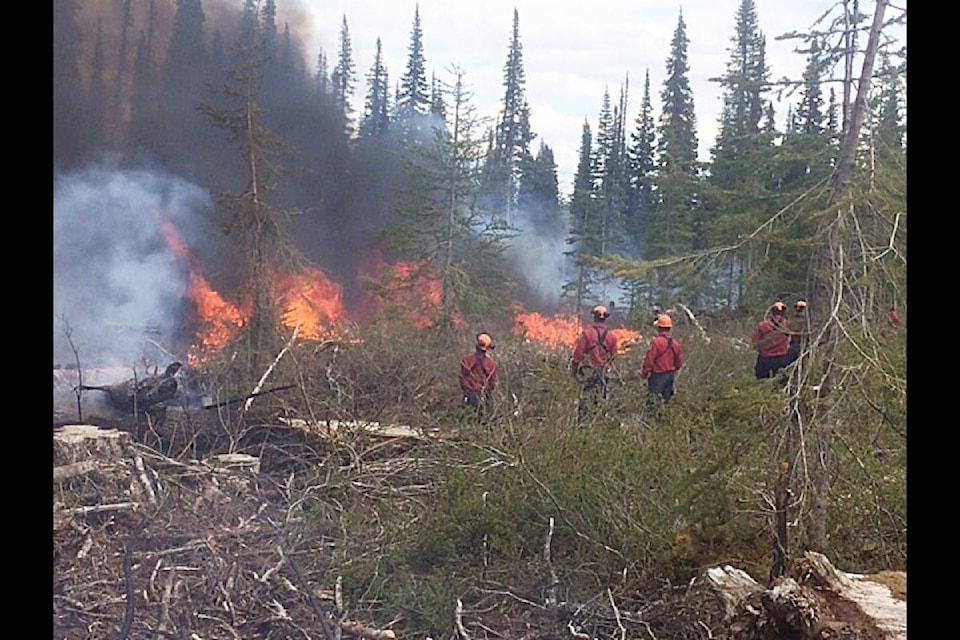The B.C. Wildfire Service has been conducting a controlled burn near the base of Mount Horetsky, approximately 39 km northwest of Fort Babine.
A collaborative project between the Lake Babine Nation, Pacific Inland Resources, the Bulkley Valley Research Centre and the B.C. Wildfire Service, these prescribed burns will remove slash on 58 hectares of recently harvested land.
In addition to reducing fuel load on the landscape, the objective of this prescribed burn is to assess the value and role of broadcast burning in stimulating berry plant growth and improving grizzly bear habitat.
Post-burn, the Bulkley Valley Research Centre - an independent, not-for-profit society that conducts research on natural resources - will perform environmental monitoring to identify and record levels of berry production and increases in the amount of grizzly bear habitat.
The prescribed burn was ignited on Tuesday, May 30 and continued throughout the week. Prescribed burns are only ignited if weather conditions are suitable to ensure that the fire burns within a set of parameters and occurs under favourable smoke venting conditions.
According to Olivia Pojar, fire information officer for the Northwest Fire Centre, weather conditions on May 30 and in the following days were within the parameters necessary for desired fire behaviour and effects. She said trained personnel have been carefully monitoring the burn and that the burn was done under conditions that helped minimize the amount of smoke generated.
“The burn went well and B.C. Wildfire Service crews will continue work at the burn site into next week after which a long-term monitoring and patrol plan will be finalized in collaboration with Pacific Inland Resources,” explained Pojar last week. “The duration of work and patrol will be based on weather and fuel conditions.”
